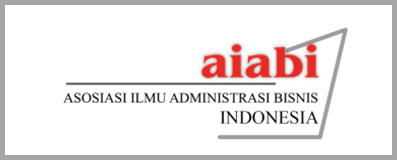Needs Assessment Analysis Of Human Resources Development In Indonesia Financial Services Authority
DOI:
https://doi.org/10.31334/bijak.v18i1.1201Keywords:
Analysis, Human Resources Development, Needs AssessmentAbstract
Being the only institution in Indonesia with supervisory, regulatory and audit functions in the financial services industry sector, human resources in the Indonesia Financial Services Authority (OJK) are expected to meet the quality that is in line with the dynamic development of information technology and financial innovation. Needs assessment process is required as one of the OJK's efforts to futher improve its human resources, in which there is no size or scale required for behavioral and technical competence at each role level. The purpose of this study is to analyze the needs assessment and the factors that affect the needs assessment at OJK. Current research employs a post positivism approach with qualitative methods and field study data collection techniques through in-depth interviews and literature studies. Research results reveal that the needs assessment process at OJK has not used technical and behavioral competency measures because there is no measurement referred to in the internal regulations regarding current job descriptions, therefore OJK does not yet have an accurate employee database profile.References
Bansal, A. &Tripathi, J. P. (2017).A Literature Review on Training Needs Analysis
Berman, E.M., Bowman, J. S.,West, J.P., & Wart, M. R. Van. (2016). Human Resource Management in Public Service: Paradoxes, Processes, and Problems. USA: Sage Publications
Caldwell, Bruce J. (1994). Beyond Positivism
Eastmond, J.J. &Altschud, J. (2018).Needs Assessment Phase I: Getting Started. California: Sage Publication
Eerde, W. Van, Tang, K. C. S., & Talbot, G. (2008). The Mediating Role of Training Utility In The Relationship Between Training Needs Assessment and Organizational Effectiveness
Jerabek, Ann. (2003). Job Description: Don’t Hire Without Them
Leat, M.J. & Lovell, M.J. (1997). Training Needs Analysis: Weaknesses in The Conventional Approach
Lim, S., Keon, H.L. & Kwi, H.B. (2019). Distinguishing Motivational Traits between Person-Organization Fit and Person-Job Fit: Testing the Moderating Effects of Extrinsic Rewards in Enhancing Public Employee Job Satisfaction.
Marler, J.H. & Parry, E. (2016). Human Resource Management, Strategic Involvement, and e-HRM Technology.
McEwen, T. & McEwen, B. C. (1995). Assessment Center: A Technique for Evaluating Administrative Skills
Mondy, R. W & Martocchio, J.J. (2016). Human Resource Management. Essex:Pearson
Newburry, W. & Thakur, P. (2010). Multilevel Impacts on Perceived Career Opportunity from Global Integration: Human Capital Development Within Internal Institutional Environments
Ortenbland, Anders. (2001). On Differences Between Organizational Learning And Learning Organization
Rahayu, Amy Y. & Vishnu Juwono (2019). Birokrasi dan Governance: Teori, Konsep dan Aplikasinya. Depok: Rajawali Pers.
Teng, T. Y., Bonk, C. J., & Kim, K. J. (2009). The trend of blended learning in Taiwan: perceptions of HRD practitioners and implications for emerging competencies
Werner, J. M. & DeSimone, R.L. (2012). Human Resource Development Sixth Edition. USA: CENGAGE Learning
Law : Law Number 21 of 2011, the Financial Services Authority (OJK)
Downloads
Published
Issue
Section
License

This work is licensed under a Creative Commons Attribution-ShareAlike 4.0 International License
Please find the rights and licenses in Majalah Ilmiah Bijak By submitting the article/manuscript of the article, the author(s) agree with this policy. No specific document sign-off is required.
- License
The commercial use of the article will be governed by the Creative Commons Attribution license as currently displayed on Creative Commons Attribution-ShareAlike 4.0 International License.
2. Author(s)' Warranties
The author warrants that the article is original, written by stated author(s), has not been published before, contains no unlawful statements, does not infringe the rights of others, is subject to copyright that is vested exclusively in the author and free of any third party rights, and that any necessary written permissions to quote from other sources have been obtained by the author(s).
3. User Rights
Majalah Ilmiah Bijak spirit is to disseminate articles published are as free as possible. Under the Creative Commons license, Majalah Ilmiah Bijak permits users to copy, distribute, display, and perform the work for non-commercial purposes only. Users will also need to attribute authors and Majalah Ilmiah Bijak on distributing works in the journal and other media of publications.
4. Co-Authorship
If the article was jointly prepared by more than one author, any authors submitting the manuscript warrants that he/she has been authorized by all co-authors to be agreed on this copyright and license notice (agreement) on their behalf, and agrees to inform his/her co-authors of the terms of this policy. Jurnal Bijak will not be held liable for anything that may arise due to the author(s) internal dispute. Majalah Ilmiah Bijak will only communicate with the corresponding author.
5. Miscellaneous
Majalah Ilmiah Bijak will publish the article (or have it published) in the journal if the article’s editorial process is successfully completed. Jurnal Bijak editors may modify the article to a style of punctuation, spelling, capitalization, referencing and usage that deems appropriate. The author acknowledges that the article may be published so that it will be publicly accessible and such access will be free of charge for the readers as mentioned in point 3.
Every accepted manuscript should be accompanied by "Copyright Transfer Agreement"prior to the article publication.





1.png)




